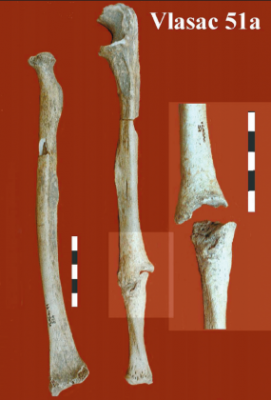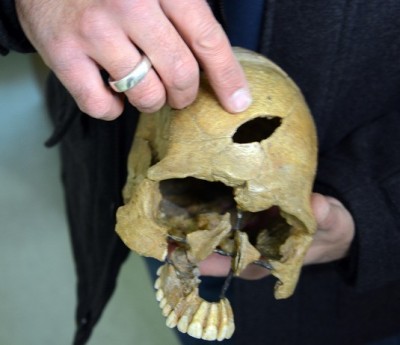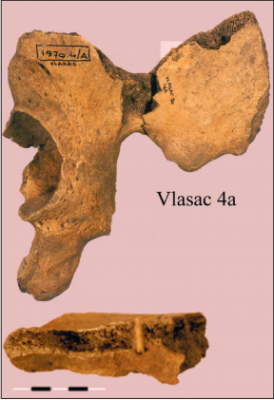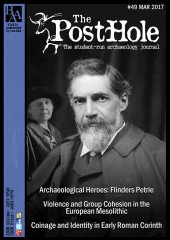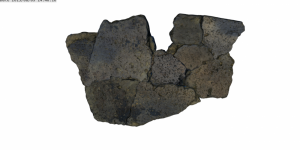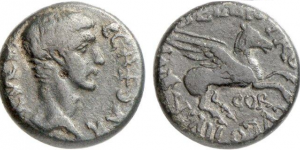Debates about the presence or absence of violence in prehistory have often hinged upon how we see ourselves as a species. Are we innately violent, or have we become violent as a response to our increasingly complex social organisation? Is it true that "war...appeared with the first man", as Barack Obama claimed in his Nobel Prize acceptance speech (The Nobel Foundation 2009)? The question is complicated by imprecision regarding the definition and use of the terms ‘violence’ and ‘warfare’. Violence encompasses both individual and group aggressive actions, which may be inter- or intra-group. By contrast, warfare is “organized aggression between autonomous political units” (Thorpe 2003, 171) and includes raiding and group feuding. Another important element of warfare is “social substitutability…violence is not personally directed, but directed towards the group” (Rogers 2004, 13). Warfare contains acts of violence, but is not just interpersonal aggression ‘scaled-up’. This paper will show that there is clear evidence of violence throughout the Mesolithic period in Europe. The evidence for warfare is less apparent and clearly varies widely both geographically and chronologically. The implications this has on group cohesion and identity will also be considered.
The evidence for violence in prehistory falls into four categories: weapons, fortifications, artistic representations and skeletal evidence (Schulting 2006, 224; Thorpe 2003, 172; Knüsel 2005, 49). Of these, skeletal evidence is the most useful in the Mesolithic period. Artistic representations of violence or war are lacking, as is evidence for the types of fortifications or military buildings that have been found in later periods. Until the advent of the sword, no implements have been identified in prehistory whose sole use was for inflicting violence on other humans (Thorpe 2005, 6). Instead we see “tool-weapons” (Chapman 1999) such as the axe and arrow. Without further use-wear and residue analysis, the use of certain tools cannot be fully understood. The tools used to fell trees and kill animals would have been equally efficient at damaging humans. Smashed skulls and projectiles embedded in bones show clearly that such tools were used as weapons, and it is this skeletal evidence which can provide the most information (Knüsel 2005, 50).
Although skeletal evidence provides the best clue, it is still subject to interpretive difficulties (Jackes 2004, 23). The skeletal evidence is often fragmentary and damaged, trauma is hard to identify and classifying this trauma as violence is even harder. Although much work has been done on European Mesolithic remains (e.g. Meikeljohn et al 2010; Estabrook 2014; Grünberg 2013; Radovanic 1996), a database of all burials is not readily available. An attempt to make such a database runs into problems of data availability, inaccurate reporting and disagreement between experts. Estabrook (2014) has tabulated 90 instances of bone injury which were probably a result of violence (see figure 1). These are from a total of 2000 buried individuals that have been identified on 232 burial sites, many of which contain only one or two individuals (Grünberg 2013, 231). The majority of these burials, whether they are single or multiple interments, contain only fragments of bone, which have often been damaged by taphonomic processes.
Living bone fractures in a noticeably different way to dry bone (Knüsel 2005, 51-4), and ante-mortem injuries will show signs of healing if the wound survived for more than two weeks (Roksandic 2004a, 54). Thus ante- and post-mortem injuries are relatively easy to differentiate. However, determining whether perimortem fractures are due to fatal injury or damage after death, such as from ritual mortuary practices, is extremely difficult. Bone takes time to dry out, and can retain green, plastic qualities for up to two months after death (Roksandic 2004a, 54). Finally, deciding whether this skeletal trauma is accidental or due to human violence can verge on impossible (Roksandic 2004b, 4). As there is no universal indicator of violence, we must rely on ‘best judgement’ based on the evidence of the bones, the context and cross-cultural knowledge (Rogers 2004; Knüsel 2005, 53).
Postcranial Trauma
The postcranial skeleton suffers the most from post-depositional damage due to its relative fragility (Schulting 2006, 229). As assailants are more likely to attack the head and neck (Walker 1997, 160), trauma on the postcranial skeleton is usually attributable to accident. Exceptions to this are injuries to the arm and hand, often seen as ‘self-defence’ injuries (Rogers 2004, 12), such as the ‘parry fracture’ of the ulna (Schulting 2006, 229). Although this has been widely interpreted as evidence of violence, it could also indicate damage due to certain active lifestyles (see Jackes' 2004 study of Portuguese middens). In the case of Vlasac 51a from the Iron Gates region (see figure 2), a fractured ulna has been interpreted as a parry fracture; despite lack of associated craniofacial trauma. As is often the case, insufficient cranial material remained, and as such, the question of whether this could represent violence remains ambiguous (Roksandic 2004a, 64).
Cranial trauma
“The cranium is often the target of blows” (Knüsel 2005, 55) and "is a plastic medium that faithfully records the details of the objects that strike it” (Walker 1997, 146). Thus, healed and unhealed cranial damage is both recognisable and usually indicative of violent trauma in adolescents and adults (Walker 1997, 163). Despite disputes over the numbers and interpretations of cranial trauma in individual cases (e.g. Ofnet, compare Frayer 1996 and Orschiedt 2005), the fact that such trauma is widespread and abundant throughout the European Mesolithic (Schulting 2006, 227) is incontrovertible. Two of the 30+ crania found at Ofnet had both healed and unhealed trauma (Orschiedt 2005, 69), and Bennicke’s studies of Danish Mesolithic skeletal remains also indicated that both non-fatal and fatal cranial trauma was common (Thorpe 2000). It is conceivable that cranial trauma could be due to accident, but seems more likely to be the result of violent encounters. At Ofnet, the “lozenge shaped” (Frayer 1996, 192; see figure 3) marks are “consistent only with the use of a chopper-like instrument” (Orschiedt 2005, 71), such as the axes of antler and polished stone found at other sites in the region (Ibid.).
Projectiles
The most convincing evidence comes from cases where projectiles have been found embedded in bone (see figure 3). Burials at the Dnieper rapids sites in modern Ukraine include multiple examples of this, such as Burial 17 at Vasilyevka I, which had injuries from four projectiles, evident through bone damage, embedded points and fragments of points with impact damage (Lillie 2004, 92). The question of loose projectiles found in graves is more controversial. While they are often recorded as grave goods, they could alternatively represent soft tissue injuries. Arrows don’t often strike bones and wounds may be as many as "three times the number that left indelible marks on skeletons.” (Milner 2005, 150-1). Projectile trauma must surely be underrepresented, but this could only be rectified with careful and costly analysis of use wear, blood residues, minute bone damage (e.g. on ribs) and impact damage on the projectile. At Voloshkoe, two of the 19 burials (burials 5 & 3) had projectile points embedded in bone (Lillie 2004, 91). Nearby, Burial 16 had two points in close proximity, one with residue of bone mass, and Burial 10 had a point with fracture damage (Lillie 2004, 91). Despite this, the lack of skeletal trauma means these individuals are not classed as suffering violent trauma.
Even taking a sceptical approach, it is undeniably clear that there was some degree of interpersonal violence in the European Mesolithic. While some of the skeletal injuries could be explained by accidental trauma, it is implausible to suggest that they all were. The evidence of violent trauma, despite under-reporting (due to the fragmentary record), lack of soft tissue evidence and cautious interpretation must surely point to greater numbers of unidentified traumatic injury and possible violence.
Warfare in the Mesolithic?
A bigger question for many scholars, particularly those outside the field of archaeology, is not about individual acts of violence, but about the causes and origins of warfare. The literature on prehistoric violence and warfare has largely been written by sociologists, philosophers and anthropologists; often using cherry-picked and unrepresentative archaeological evidence (e.g. Pinker 2011, compare Ferguson 2013a). A starting point in many discussions are the writings of Hobbes (Leviathan, 1651) and later, Rousseau (Discourse on inequality, 1755). Their views are distilled and polarised, then placed in opposition, as Hobbes’ ‘brutish’ savage and Rousseau’s ‘noble savage’ (a term he in fact never used). Although still influential in the debate on the origins and nature of warfare, neither are based on archaeological evidence, as both were formulated centuries ago. They seek to establish universal truths about humans, though both are rooted in the perspectives of the age, and reflect more upon their own culture than upon prehistory.
A consideration of both the archaeological and ethnographic evidence for violence in hunter-gatherer societies throughout time, shows that there is no universal truth, but considerable variability (Thorpe 2005, 3). Few hunter-gatherer groups studied ethnographically are fully pacifist, and few are always involved in violent conflict (Parker Pearson 2005, 22). The situation in the Mesolithic period will be shown to be similar. For evidence of organised conflict, we must again rely on the skeletal record and burial information. The majority of the sites with evidence for trauma contain single individuals (see table 1). This can be taken as evidence for interpersonal violence, but not warfare. Multiple interments or mass graves are one possible sign of organised conflict (Frayer 1997, 183, Schulting 2006, 232). These could be explained by disease, starvation or accident, but even in cases where there is no obvious sign of violence, it cannot be ruled out. For example, the eight people of varying ages found within a mass grave in Sjællend, Denmark, showed no sign of skeletal trauma (Brinch Petersen 1987, 8). Far less ambiguous is the famous ‘skull nest’ site at Ofnet, which combines a mass grave with widespread evidence for cranial blunt force trauma, and seems unequivocally to be evidence of "warlike conflict" (Orschiedt 2005, 74).
It is difficult to prove trauma is the result of violence on a case-by-case basis, let alone determine if it was due to intragroup violence or organised warfare (Roksandic 2004b, 2). However, sites which show a very high percentage of violent trauma are the most obvious possibilities for warfare. Schela Cladovei, the Dnieper Rapids and Ofnet are all candidates for this interpretation. At Schela Cladovei, on the Danube outside the Iron Gates region, as many as five individuals had embedded projectile points, five displayed cranial trauma, and a further nine had postcranial trauma, out of a total of 57 burials (Roksandic 2004a, 71). Particularly for area III, where seven of 25 burials showed signs of violent trauma, the burials were similar, and restricted in time (Roksandic 2004a, 72). This suggests a short, violent period which could be considered indicative of organised conflict. At the Vasilyevka and Voloshkoe burial sites at the Dnieper rapids, Ukraine, trauma has been interpreted as conflict for resources at a fishing site (Lillie 2004, 94). Not only was trauma evident, but the differences in projectile points suggested they were from another group (Lillie 2004, 95). This external technology gives us the most compelling evidence for intergroup conflict.
The fact that only three burial sites indicating possible conflict have been identified shows that the Mesolithic cannot be seen as a time of endemic warfare. Furthermore, “defence structures and differentiated implements for hunting versus warfare are lacking” (Roksandic 2004a, 53), and would be expected if organised conflict was truly pervasive.
Implications for social relationships
Intergroup conflict can only occur when both groups have a clear group identity and strong social relationships and organisation: when their society is segmented (Roksandic 2004, 3-4). Thus in those areas where we see evidence of conflict, we can assume that these people clearly self-identified, and were identified by others, as a group whose shared interests and culture were defined and understood clearly enough to be placed in opposition to an external group. In the past, warfare was seen as arising only among settled agricultural societies (Carneiro 1970, 735) who fought over land. However, the evidence for conflict seen in the Mesolithic shows that, though uncommon, it did occur with earlier complex hunter-gatherer societies. The possible evidence of violence at the Dnieper rapids and Schela Cladovei may show that such groups felt that they had, or could assert, territorial rights over the land and rights over resources.
However, the fact that levels of violence were low elsewhere does not necessarily indicate that most Mesolithic groups had low levels of social cohesion and organisation, or lacked the shared group identity required to wage external war or prevent internal conflicts. Jackes’ (2004, 35) ethnographic work suggests that the levels of skeletal trauma indicating violence does not correlate with levels of social cohesion. A cohesive group might be united in their preference for warfare, ritual violence or domestic abuse as easily as in non-violent, cultural expressions. As excessive or fatal violence within any group is not conducive to survival, most foraging societies studied ethnographically have mechanisms in place to avoid it, and it is only when these fail to resolve conflicts that violence erupts (Kelly 2013, 156). Schulting suggests that the “large proportion of cranial injuries [which] are healed could suggest a more controlled form of violence in which the death of the participants was not seen as appropriate” (2006, 228). It is possible that this controlled violence may have been part of a mechanism for reducing interpersonal and intergroup violence by allowing controlled aggression. The skeletal record shows plentiful non-lethal trauma. High levels of healed cranial trauma in Southern Scandinavia may reflect a culture of duelling with clubs (Thorpe 2005, 11), without intent to kill. A strong aversion to killing other humans is evident in healthy modern individuals (Hughbank and Grossman 2013), and there is no reason to believe that would not have always been the case. Of the 90 instances of trauma identified by Estabrook (2014, 62), 40 were non-fatal. This evidence of healed trauma and trepanation, possibly associated with the healing of cranial trauma, also gives insight into cultural practices of caring for and treating the sick and wounded (Estabrook 2014, 50). This also seems indicative of strong social relationships and group identity.
Exotic artefacts and grave goods show that groups may have been trading and coming into contact regularly; that individuals, groups and artefacts were certainly moving through the landscape (Jochim 2008, 217; Cristiani and Borić 2012, 3463). Although the skeletal record shows us that there may at times have been warfare, other cemeteries reveal that peace often prevailed. Even larger burial sites such as Lepenski Vir (Iron Gates) and Olenii Ostrov Mogilnik (Karelia) show very little evidence for trauma in burial populations of hundreds (Chapman 1999, 105; Roskandic 2004a). So perhaps we should ask, why was there peace? We see that groups must have been making contact, and yet evidence suggests they were not always at war. There must have been mechanisms for keeping the peace that were held in common between and within groups, as well as strategies of conflict resolution and mediation (Fry 2013, 228). While group cohesion may be a necessary precondition of war, it does not necessarily lead to it. Conversely, lack of evidence for warfare does not necessarily indicate lack of group cohesion, but may instead indicate concerted, active efforts to maintain peace.
Conclusion
To return to Hobbes and Rousseau, it is clear that not all societies in the Mesolithic were peaceful, but they were not all brutal either. Subscription to these artificially ‘polar ideologies’ (Ferguson 1997, 321) is unhelpful and obscures the chronological and regional variation shown in the skeletal evidence. It has been suggested that in the 20th century we are deliberately pacifying the past with our interpretations; perhaps looking for proof that as a species we are not innately violent (Keeley 1996). Certainly some evidence of trauma has previously been overlooked or classed as ritual, but the caution used when interpreting evidence should be common to all archaeological interpretation, and is not reserved solely for warfare. While interpersonal violence is clearly apparent in the archaeological record, there is simply not sufficient evidence for extensive, widespread intergroup violence in the European Mesolithic. While it was not unknown, it was sporadic and contained, rather than endemic.
Editor’s Choice
This article takes an exceptionally balanced and thoughtful approach to the question of violence and warfare in Mesolithic Europe. As the two terms are often used interchangeably, or rather without any clarity of definition, Waller takes the time early on to differentiate the former from the latter. In the subsequent discussion of skeletal trauma, similar care is taken to expound the difficulties of interpretation. The line between accidental damage and deliberate harm is particularly problematic, for example, but is navigated with aplomb. The proposition that organised, large-scale violence was far from endemic is competently argued, and the implications that this conclusion has for notions of prehistoric social cohesion are well-reasoned. All in all, Waller’s paper makes for fascinating reading.
Bibliography
- Brinch Petersen, E. (1987). Eight People in One Grave—The Mesolithic Record? Mesolithic Miscellany 8(1), 14 - 15.
- Carneiro, R.L. (1970). A theory of the origin of the state. Science 169, 733-8 [Online] Available at: http://www.jstor.org/stable/1729765 [Accessed 26 Feb. 2016].
- Chapman, J. (1999). The origins of warfare in the prehistory of Central and Eastern Europe. In J. Carman and A.F. Harding (Eds). Ancient warfare: Archaeological perspectives. Stroud: Sutton pp.101-142.
- Cristiani, E. and Borić, D. (2012). 8500-Year-Old Late Mesolithic Garment Embroidery from Vlasac (Serbia): Technological, Use-Wear and Residue Analyses. Journal of Archaeological Science 39 (11). Elsevier, 3450–69.
- Estabrook, V. H. (2014). Violence and Warfare in the European Mesolithic and Paleolithic. In M.W. Allen and T.L. Jones (Eds). Violence and warfare among hunter-gatherers. California: Left Coast Press (e-book), pp. 49 - 69.
- Ferguson, R.B. (1997). Violence and War in Prehistory. In D.L. Martin and D.W. Frayer (Eds). Troubled Times: Violence and warfare in the past. New York: Gordon and Breach, pp. 321-355.
- Ferguson, R.B. (2013a). Pinker’s List: Exaggerating Prehistoric War Mortality. In D.P. Fry (Ed). War, Peace, and Human Nature: The Convergence of Evolutionary and Cultural Views. Oxford Scholarship online. pp. 115-128 [Online] Available at: DOI:10.1093/acprof:oso/9780199858996.003.0007 [Accessed 26 Feb 2016].
- Frayer, D.W. (1997). Ofnet: evidence of a Mesolithic massacre. In D.L. Martin and D.W. Frayer (Eds). Troubled Times: Violence and warfare in the past. New York: Gordon and Breach, pp. 181-216.
- Fry, D.P. (2013). War, Peace, and Human Nature: The Convergence of Evolutionary and Cultural Views. Oxford Scholarship online. [Online] Available at: DOI: 10.1093/acprof:oso/9780199858996.001.0001 [Accessed Feb 26 2016].
- Garcia Guixe, E., Richards, M.P. and Eula`lia Subira, M. (2006). Palaeodiets of Humans and Fauna at the Spanish Mesolithic Site of El Collado. Current Anthropology, Volume 47, Number 3, June 2006, 549-556.
- Grünberg, Judith M. (2013). Animals in Mesolithic Burials in Europe. Anthropozoologica, 48 (2), 231–53.
Hobbes, T. (1999). Leviathan, or the matter, forme, & power of a common-wealth Ecclesiasticall and Civill. McMaster University Archive of the History of Economic Thought. - Hughbank, R.J and Grossman, D. (2013). The Challenge of Getting Men to Kill: A View from Military Science. In D.P. Fry (Ed). War, Peace, and Human Nature: The Convergence of Evolutionary and Cultural Views. Oxford Scholarship online. pp. 495 - 513. [Online] Available at: DOI:10.1093/acprof:oso/9780199858996.003.0025 [Accessed 26 Feb 2016].
- Jackes, M. (2004). Osteological evidence for Mesolithic and Neolithic violence: Problems of interpretation. In M. Roksandic, (Ed). Evidence and meaning of violent interactions in Mesolithic Europe. BAR International Series 1237. Oxford: Archaeopress, pp. 23-39.
- Jochim, M. (2008). The Mesolithic of the Upper Danube and Upper Rhine. In G. Bailey and P. Spikins (Eds). Mesolithic Europe. Cambridge: Cambridge University Press, pp. 203–20.
- Keeley, L.H. (1996). War before civilization. Oxford: OUP.
- Kelly, R.L. (2013). From the peaceful to the warlike: Ethnographic and archaeological insights into hunter-gatherer warfare and homicide. In D.P. Fry (Ed). War, Peace, and Human Nature: The Convergence of Evolutionary and Cultural Views. Oxford Scholarship online. pp. 495 - 513. [Online] Available at: DOI:10.1093/acprof:oso/9780199858996.003.0009 [Accessed 26 Feb 2016].
- Knüsel, C.J. (2005). The physical evidence of warfare - subtle stigmata? In M. Parker Pearson and I.J.N. Thorpe (Eds). Warfare, Violence and Slavery in Prehistory. 1374 British Archaeological Reports. International Series. Oxford: Archaeopress. pp.49-65.
- Lillie, M.C. (2004). Fighting for your Life? Violence at the Late-glacial to Holocene transition in Ukraine. In M. Roksandic (Ed). Violent interactions in the Mesolithic. Evidence and meaning. Oxford: Archaeopress, BAR International Series, pp. 89-96.
- Milner, G.R. (2005). Nineteenth-Century Arrow Wounds and Perceptions of Prehistoric Warfare. American Antiquity, Vol. 70, No. 1 (Jan., 2005), 144-156 Society for American Archaeology. [Online] Available at: http://www.jstor.org/stable/40035273 [Accessed: 28 Feb 2016].
- Meiklejohn, C., Chamberlain, A.T. and Schulting R.J. (2010). Radiocarbon dating of Mesolithic human remains in Great Britain. Mesolithic Miscellany 21(2),20-58.
The Nobel Foundation (2009) Nobel Lecture by Barack H. Obama, Oslo, 10 December 2009. [Online] Available at: https://www.nobelprize.org/nobel_prizes/peace/laureates/2009/obama-lectu... [Accessed: 24/01/2017] - Orschiedt, J. (2005). The Head Burials from Ofnet Cave: An Example of Warlike Conflict in the Mesolithic. In M.Parker Pearson and I.J.N. Thorpe (Eds). Warfare, Violence and Slavery in Prehistory. British Archaeological Reports International Series 1374, Oxford: Archaeopress, pp.67–74.
- Parker Pearson, M. (2005). Warfare, violence and slavery in later prehistory: an introduction. In M.Parker Pearson and I.J.N. Thorpe (Eds). Warfare, Violence and Slavery in Prehistory. British Archaeological Reports International Series 1374, Oxford: Archaeopress, pp.19-34.
- Pinker, S. (2011). The better angels of our nature: why violence has declined. London: Allen Lane (Penguin Group).
- Radovanic, I. (1996). The Iron Gates Mesolithic. Ann Arbor: International Monographs in Prehistory.
- Rogers, T. (2004). Recognizing inter-personal violence: a forensic perspective. In M. Roksandic (Ed). Violent interactions in the Mesolithic. Evidence and meaning. Oxford: Archaeopress, BAR International Series, pp.9-21.
- Roksandic, M. (Ed). (2004). Violent interactions in the Mesolithic. Evidence and meaning. Oxford: Archaeopress, BAR International Series.
- Roksandic, M. (2004a). Contextualizing the evidence of violent death in the Mesolithic: burials associated with victims of violence in the Iron Gates Gorges. In M. Roksandic (Ed). Violent interactions in the Mesolithic. Evidence and meaning. Oxford: Archaeopress, BAR International Series, pp.53-74.
- Roksandic, M. (2004b). How violent was the Mesolithic, or is there a common pattern of violent interactions specific to sedentary hunter-gatherers? In M. Roksandic (Ed). Violent interactions in the Mesolithic. Evidence and meaning. Oxford: Archaeopress, BAR International Series, pp.1-8.
- Roksandic, M. (2006). Violence in the Mesolithic. Documenta Praehistorica XXXIII, Oddelek za arhelogijo. Slovenia: Filozosofska fakulteta, University of Ljubljana. Available online: http://arheologija.ff.uni-lj.si/documenta/pdf33/roksandic33.pdf [Accessed 7 March 2016].
- Schulting, R.J. (2006). Skeletal evidence and contexts of violence in the European Mesolithic and Neolithic. In R. Gowland and C. Kusel (Eds). Social archaeology of funerary remains. Oxford: Oxbow books, pp. 224-237.
- Thorpe, N. (2000). Origins of war: Mesolithic conflict in Europe. British Archaeology, No 52, [Online] available: http://www.britarch.ac.uk/ba/ba52/ba52feat.html [Accessed 23 Feb 2016].
- Thorpe, I.J.N. (2003). Death and violence- the later Mesolithic of southern Scandinavia. In L. Bevan and J. Moore (Eds). Peopling the Mesolithic in a Northern Environment. Oxford: Archaeopress, British Archaeological Reports International Series 1157, pp.171-180.
- Thorpe , I.J.N (2005). The ancient Origins of warfare and violence. In M.Parker Pearson and I.J.N. Thorpe (Eds). Warfare, Violence and Slavery in Prehistory British Archaeological Reports International Series 1374. pp. 1-19.
- Walker, P.L. (1997). Wife beating, boxing and broken nose: skeletal evidence for the cultural patterning of violence. In D.L. Martin and D.W. Frayer (Eds). Troubled Times: violence and warfare in the past. New York: Gordon and Breach, pp. 321-355.
Image Credits
- Figure 1: Base map from www.youreuropemap.com
- Figure 2 & 4: Roksandic, M. (2006). Violence in the Mesolithic. Documenta Praehistorica XXXIII, Oddelek za arhelogijo. Slovenia: Filozosofska fakulteta, University of Ljubljana. [Online] Available at: http://arheologija.ff.uni-lj.si/documenta/pdf33/roksandic33.pdf [Accessed 7 March 2016].
- Figure 3: Ludwig-Maximilians-Universität München, [Online] Available at: www.en.uni-muenchen.de/news/newsarchiv/bildergalerie/hidden_nooks/4.html [Accessed 6 March 2016].



